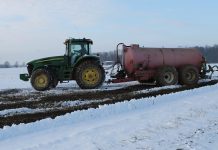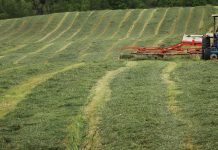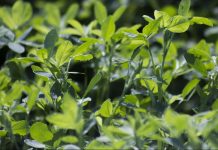“Until I came out here to live, I was, like most city people, conscious of the weather only as a mild nuisance or excitant, as a furtive element in the streets, reminding one of other times and other places, and as the last resort of conversation.”
– Charles Allen Smart, RFD, 1938
Conclusion to series
For a man who had never paid much attention to weather, Charles Smart quickly learned that weather could make or break him as he struggled in his first years as a farmer in the extremes of the 1930s.
Smart acknowledged that his Harvard degree had prepared him well for other things, but he wasn’t sure that much could have prepared him for taking over his aunt’s farm in Chillicothe, Ohio. The amount of knowledge and common sense required to run a farm was simply staggering. And that is before taking in to account all the variables that cannot be controlled, such as weather and swaying markets.
Weather woes. He writes, “In this region, during the War, the abnormal boom in commodity prices seems to have been nullified, in some small part, by extremes of heat and cold. Then, during the first part of the deep agricultural depression that began with rising world tariffs and increased production elsewhere, in 1919, ten years before New York and Washington discovered that anything was wrong in God’s country, the weather seems to have been fairly moderate and helpful.
“Then, in 1930, there was a serious drought, that lasted, more or less steadily, until 1934 and 1935. The water level kept falling, and more and more wells went dry, while more and more banks closed their doors and more and more mortgages were foreclosed.
“In 1934 and 1935 we profited by the operations of the A.A.A., and perhaps more effectively, by the disasters that ruined farmers farther west.”
Then, as now, the unlucky breaks of other farmers could save the struggling farmers elsewhere.
Survival. The winter of 1935-36 proved to be a winter more extreme than any since 1884, and Smart and his bride found themselves just trying to survive. They had inherited his aunt’s farm and farmhouse, which was so drafty and cold they would awake to snow blowing about on their bedroom floor.
When this weather broke, there was “a month or so of delightful weather, in which everything got planted, and started growing with such promise that commodity prices looked shaky, and I sold half my corn at Bellbridge.”
Extremes. This was followed by about five months of practically no rain and extreme heat. “For weeks and weeks the temperature hovered between ninety and a hundred in the shade, with occasional winds that felt as though they had come from a furnace.
“The wheat harvested in June was generally good, and the price was about a dollar. Old corn prices reached new heights, above wheat, but this didn’t mean much, because most new corn crops hereabouts were about half of normal.
“Most gardens, including ours, which was our pride and joy in May, were wiped out. Most farmers were forced to feed most of their livestock in summer, or sell most of it, but although mine looked bad for a while, I held on without doing either.
“Pastures were browner and barer than they were in the following January, and there was almost no hay.”
Hope. Then came beautiful, hopeful weather in late September, followed by a “a winter of abnormal warmth and heavy rains, culminating in floods that – it can bear repetition – drove half a million people from their homes and did untold damage to buildings, crops, and farms. This spring, so far, has been mild and promising. It should be remembered that compared to people in the Dust Bowl, and elsewhere, we have been fairly lucky, so far.”
Optimism. So while Smart was learning the art of survival in Ohio’s weather extremes, he had also developed (remarkably quickly) the incredible farmer’s optimism – that ability to realize that no matter how bad it was, there were others worse off.
He notes, “This great and indifferent power we call weather not only affects every decision we make, every moment of our work, and all its tangible results, to the last grain of corn, the last flower, and the last penny. It also, and this is probably even more important, affects directly the quality of every waking moment.”












